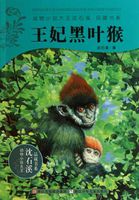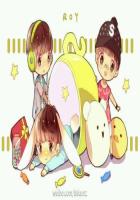And so I develop my theory of a primary larval form, differing in every way from the one which I know. The organization of the Anthrax must be such, at the beginning, as to permit of its moving on the surface of the dome where the egg has been dropped so carelessly; the nascent grub must be supplied with tools to pierce the concrete wall and enter the Bee's cell through some cranny.
The fly grub, perhaps dragging the remnants of the egg behind it, must set out in quest of board and lodging almost as soon as it is born. It will succeed under the guidance of instinct, that faculty which waits not to number the days and which is as far seeing at the moment of hatching as after the trials of a busy life. This primary grub does not seem to me outside the limits of possibility;I see it, if not in the body, at least in its actions, as plainly as though it were really under the lens. It exists, if reason be not a vain and empty guide; I must find it; I shall find it. Never in the history of my investigations has the logic of things been more insistent; never has it directed me with greater certainty towards a magnificent biological theory.
While vainly trying to witness the laying of the eggs, I inquire, at the same time, into the contents of the Mason bee's nests, in quest of the grub just issued from the egg. My own harvest and that of my young shepherds, whose zeal I employ in a task less difficult than the first, procure me heaps of nests, enough to fill baskets and baskets. These are all inspected at leisure, on my work table, with the excitement which the certainty of an approaching fine discovery never fails to give. The Mason's cocoons are taken from the cells, inspected without, opened and inspected within. My lens explores their innermost recesses; speck by speck, it explores the Chalicodoma's slumbering larva; it explores the inner walls of the cells. Nothing, nothing, nothing!
For a fortnight and more, nests were rejected and heaped up in a corner; my study was crammed with them. What hecatombs of unfortunate sleepers removed from their silken bags and doomed, for the most part, to a wretched end, despite the care which I took to put them in a place of safety, where the work of the transformation might be pursued! Curiosity makes us cruel. I continue to rip up cocoons. And nothing, nothing! It needed the sturdiest faith to make me persevere. That faith I possessed; and well for me that Idid.
On the 25th of July--the date deserves to be recorded--I saw, or rather seemed to see, something move on the Chalicodoma's larva.
Was it an illusion born of my hopes? Was it a bit of diaphanous down stirred by my breath? It was not an illusion, it was not a bit of down, it was really and truly a grub. What a moment, followed by what perplexities! The thing has nothing in common with the larva of the Anthrax, it suggests rather some microscopic Thread worm that, by accident, has made its way through the skin of its host and come to enjoy itself outside. I do not reckon my discovery as of much value, because I am so greatly puzzled by the creature's appearance. No matter: we will take a small glass tube and place inside it the Chalicodoma grub and the mysterious thing wriggling on the surface. Suppose it should be what I am looking for? Who knows?
Once warned of the probable difficulty of seeing the animalcule for which I am hunting, I redouble my attention, so much so that, in a couple of days, I am the owner of half a score of tiny worms similar to the one which caused me such excitement. Each of them is lodged in a glass tube with its Chalicodoma grub. The infinitesimal thing is so small, so diaphanous, blends to such good purpose with its host that the least fold of skin conceals it from my view. After watching it one day through the lens, I sometimes fail to find it again on the morrow. I think that I have lost it, that it has perished under the weight of the overturned larva and returned to that nothing to which it was so closely akin. Then it moves and I see it again. For a whole fortnight, there was no limit to my perplexity. Was it really the original larva of the Anthrax? Yes, for I at last saw my bantlings transform themselves into the larva previously described and make their first start at draining their victims with kisses. A few moments of satisfaction like those which I then enjoyed make up for many a weary hour.
Let us resume the story of the wee animal, now recognized as the genuine origin of the Anthrax. It is a tiny worm about a millimeter long and almost as slender as a hair. It is very difficult to see because of its transparency. When tucked away in a fold of the skin of its fostering larva, an excessively fine skin, it remains undiscoverable to the lens. But the feeble creature is very active: it tramps over the sides of the rich morsel, walks all round it. It covers the ground pretty quickly, buckling and unbuckling by turns, very much after the manner of the looper caterpillar. Its two extremities are its chief points of support. When at a standstill, it moves its front half in every direction, as though to explore the space around it; when walking, it swells out, magnifies its segments and then looks like a bit of knotted string.















